|
| |
| |
| |
[The Museum in Perspective]
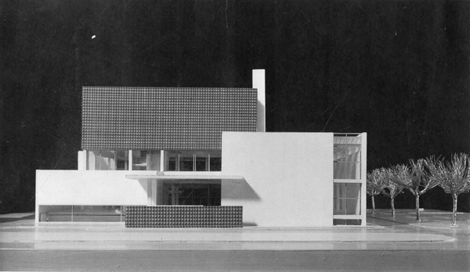
fig. 1 Rietveld's original model for the Rijksmuseum Vincent van Gogh
| |
| |
| |
Introduction: the Van Gogh Museum as a National Museum, 1973-1994
Ronald de Leeuw
On 2 June 1973 Her Majesty Queen Juliana officially opened the Rijksmuseum Vincent van Gogh. 21 years later, on 1 July 1994, the Museum gave up its status as a state-run organisation and - together with all other Dutch national museums - became an independent foundation. The Museum's official name is now ‘Stichting Van Gogh Museum’, but it operates under the title ‘Van Gogh Museum, Amsterdam’. The former Rijksmuseum H.W. Mesdag in The Hague, under the directorship of the Van Gogh Museum since 1990, is now called ‘Museum Mesdag’.
In the two decades that have elapsed since its foundation, the Van Gogh Museum has grown into one of the most popular institutions of its kind in Europe, a place of pilgrimage for millions seeking the unique experience of standing face to face with one of the 19th century's most fascinating artists. When, during a three-day excursion to Amsterdam in October 1885, Vincent van Gogh paid a visit to the recently opened Rijksmuseum, the young artist could not possibly have imagined that in less than a century an entire museum on Amsterdam's Museumplein would be dedicated to his own artistic legacy.
The collection of the Van Gogh Museum is by far the largest and most representative of the artist's oeuvre in the world. In addition to over 200 paintings and 580 drawings, it includes 7 sketchbooks and some 600 original letters from Vincent to Theo, all on permanent loan from the Vincent van Gogh Foundation. The Museum also houses work by Vincent's friends and colleagues, which the brothers either purchased or acquired through exchange. In the past, this allowed the Museum to present Van Gogh's works in a broader context; more recently, it has also formed the basis of acquisition policy.
At the time of the Van Gogh Museum's foundation, a museum dedicated to a single artist was still something of an anomaly. Since then, establishments like the Musée Picasso in Paris have dispelled any lingering doubts about the ‘one-man museum’ formula - provided, of course, that the appeal of the artist is sufficiently universal and that the quality of the collection does justice to his art. During the past decade, however, the Van Gogh Museum has been actively redefining itself, seeking - with Van Gogh as the pivotal figure - to present a broad panorama of European art of the later 19th century. In this respect, the Museum forms an ideal link between its neighbours on the Museumplein: the Rijksmuseum, devoted primarily to Dutch fine and applied art up to approximately 1900, and the Stedelijk Museum, with its international 20th-century collection.
Upon Vincent van Gogh's death in July 1890, his brother Theo inherited the entire estate. When, in turn, Theo died on 25 January 1891, his wife Jo van Gogh-Bonger decided to leave Paris, returning with her infant son Vincent Willem to her native Holland. As the widow of an art dealer, she naturally supplemented her income by occasionally selling works from the collection. In 1901, Jo married the painter and critic Johan Cohen Gosschalk, who wholeheartedly supported her tireless effort to promote her late brother-in-law's art. In 1905, both took an active part in organising the large Van Gogh exhibition at the Stedelijk Museum that helped permanently establish the artist's reputation. In 1914, Jo van Gogh-Bonger, who had reassumed her first husband's name after Cohen Gosschalk's death in 1912, published what could well be called her life's work: an edition of the entire corpus of Vincent's letters to Theo. As for the painting collection, with few exceptions, nothing more was sold until after Jo died in 1925.
Jo and Theo's son Vincent Willem had already become actively involved with the collection while his mother was still alive. In 1927, he and his wife settled in Laren. Twenty of Van Gogh's most famous pictures, the majority mounted in flat white frames, served as decoration; the rest were kept in a makeshift storage room. In 1930, following another major exhibition at the Stedelijk Museum, Dr van Gogh was asked to display his collection in Amsterdam on a
| |
| |
more permanent basis. With the exception of the war years - when the paintings were hidden in the dunes near the small town of Castricum - many of the works hung in the Stedelijk as long-term loans.
Eventually Dr van Gogh realised that if appropriate steps were not taken, the collection would be dispersed after his death. In late 1959, Dr H.J. Reinink, Director-General for the Arts at the Ministry of Education, Arts and Sciences, presented him with a detailed proposal. The plan envisioned a museum in Amsterdam - to be provided by the Dutch government - to house the collection. To this end, the Vincent van Gogh Foundation was established on 10 July 1960. In 1962, with the consent of the Dutch parliament, the State purchased the entire collection on behalf of the Foundation, and the city of Amsterdam furnished the land on the Museumplein. The Rijksmuseum Vincent van Gogh was opened officially on 2 June 1973.
The Museum's first director was Emile Meijer (1973-75), formerly head of education services at the Rijksmuseum. Along with Dr Van Gogh, he played an important role in the preliminary phases of the Museum's existence. In the beginning, the Museum had only a small staff: until 1986 curator Han van Crimpen (1973-91) was the only art historian besides the director. Meijer's lively policy - aimed at establishing the Museum within the capital's contemporary art scene - had both admirers and detractors. Eventually, the tension between Meijer and the Ministry of Culture became so great that in 1975 he was forced to resign. This marked the beginning of a period of managerial instability that lasted until the mid-1980s, at which time the Museum once again began to follow a steady course.
The first period of interim management ended in 1978 with the appointment of Johannes van der Wolk, formerly curator at the Museum Boymans-van Beuningen in Rotterdam. For most of his tenure, the overall responsibility for the Museum rested with Dr Simon Levie, general director of the Rijksmuseum. The Museum's overarching policy became strictly art historical. Once again, however, internal tensions and the difficulties arising from the termination of the Visual Arts Workshop (which was even subject to an intervention from parliament) brought Van der Wolk's directorship to an early end. Between 1982 and 1984 the museum was once again without a head. For the duration of 1985, Charles van Blommestein was designated interim director. In January
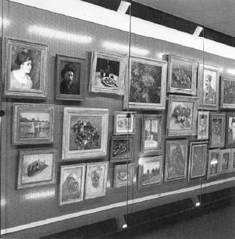
fig. 2 The study collection on the second floor
1986 the author, previously head of exhibitions and chief curator at the Netherlands Office for Fine Art (Rijksdienst Beeldende Kunst) in The Hague, was appointed. A new course was set that extended the Museum's scope to include the entire second half of the 19th century for both acquisitions and exhibitions. An active staff of young art historians, including Louis van Tilborgh, Fred Leeman and Sjraar van Heugten, was engaged to bring new life to the exhibition program, while the institution's management was further professionalised with the selection of Ton Boxma as managing deputy director.
During 1990, just as the Van Gogh Museum was experiencing a hitherto unknown degree of activity, the operation of a second museum was entrusted to it. The Museum Mesdag in The Hague, devoted to the collection of Hague School and Barbizon painting assembled by the painters Hendrik Willem Mesdag and Sientje Mesdag-van Houten, had been an independent state museum since 1915, but in later years had been administered by the staff of the Royal Cabinet of Pictures, the Mauritshuis. Believing that the joint management of two museums devoted to international 19th-century art would benefit both institutions, the Ministry of Culture decided to transfer the directorship to Amsterdam as of 1 April 1990.
| |
| |
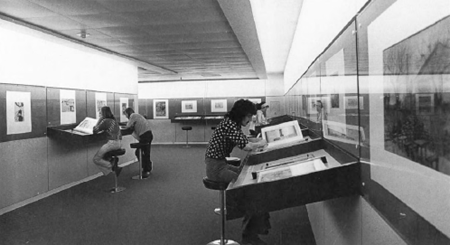
fig. 3 The print room in the 1970s
In 1991 it was possible to buy the house adjacent to the Museum Mesdag, once Mesdag's own residence. Both house and museum had, however, been allowed to deteriorate, so that major renovation was absolutely necessary. In order to accomplish this, the Museum Mesdag was closed in 1992 and is scheduled to reopen at the end of 1996. In the intervening years selections of the collection were exhibited in Amsterdam and in 1994 highlights of the Museum Mesdag toured the United Kingdom.
| |
Rietveld's building
The choice of the Amsterdam Museum's architect was Dr van Gogh's. In 1963 he met for the first time with Gerrit Rietveld, one of the leading exponents of the De Stijl movement. Rietveld produced a number of sketches, but died in 1964, as did his successor J. van Dillen, two years later. At that time, their associate J. van Tricht was contracted for the definitive design of the building and its interior.
The founder's original intention had been to display the dark works from Vincent's Brabant period on the ground floor, while the sunnier French canvases were to be placed on the higher floors, nearer the skylight. For various reasons this has proved impractical. Today, a rotating selection of pictures by other 19th-century artists is usually displayed on the Museum's ground floor, with the monumental first floor entirely given over to a chronological presentation of Van Gogh's principal works. This enables the visitor to follow the artist's development through the various stages of his life, as he moved from Nuenen to Antwerp, then on to Paris, Arles, Saint-Rémy, and finally to Auvers-sur-Oise.
Originally, the second floor, which is protected from daylight, was set aside for a permanent selection of Vincent's drawings, as well as a choice from the Japanese prints he collected. The increasingly stringent standards of collection management, however, prohibit exposing works on paper to light - however weak - for extended periods of time. Van Gogh's drawings are now displayed only occasionally. Even stricter rules apply to his letters. Written for the most part in corrosive iron gall ink on inexpensive paper, these brittle sheets are extremely fragile. Only for the centenary exhibition in 1990 was an exception made and all the illustrated letters put on display. Part of the second floor is now reserved for a study collection, featuring a broad selection of Van Gogh's minor works and some of his Japanese prints.
In 1990, during the large-scale retrospective commemorating the centenary of Vincent van Gogh's death, no less than 865,000 visitors came to the Museum. To cope with these extreme conditions not only the air conditioning but also the lighting of the building were adapted. Under the guidance of architect Frank Wintermans, a number of
| |
| |
aesthetic adjustments were made, and the library and shop were expanded. The Van Gogh Museum was designed at a period when the modernist ‘white cube’ was the norm for museum interiors. During construction Dr Van Gogh fought hard, but without success, to have at least some of Vincent's darkest Nuenen paintings hung against a tinted background. Although today it is widely accepted that 19th-century paintings look best against coloured walls, and although the staff of the Van Gogh Museum shares this conviction, it has been difficult to find a solution which does justice to both the works and Rietveld's white interior. It has been mainly within the framework of temporary exhibitions that colour experiments seemed possible. Marijke van der Wijst, for example, who was responsible for the design of the exhibition Franse meesters uit het Metropolitan Museum of Art (1987) and the Van Gogh retrospective in 1990, created dark temporary partitions or painted the Museum's own walls, which helped anchor the quite small paintings to the existing stretches of unarticulated surface.
More recently, thanks to the new division of space created by architect Peter Sas, a solution to the colour problem has been found. The long walls are now broken by abutting traverse panels, which end considerably below the ceiling. The surfaces above them have retained the original colour of the building, a broken white, so that Rietveld's conception remains perceptible no matter what colours are used elsewhere. The transition from the (coloured) exhibition rooms to the large open atrium, itself unthinkable in anything but white, seems extremely natural.
Although since the beginning the Museum's floors were covered with wall-to-wall carpeting for acoustical reasons - a seeming necessity in such an open building - a decision was made to give the eyes preference to the ears and to replace the carpet with parquet wherever possible. This latest intervention, finished in early 1995, is not only an aesthetic success: the quality of light in the Museum as a whole has also been drastically improved. While the dark carpeting absorbed the daylight, the wood reflects it, greatly enhancing both the look of the Museum and the visitor's experience of the works of art.
The Museum building has had both fans and critics. In the past, its somewhat forbidding exterior and the lack of precision in the details have been the subject of justified criticism. With the improvements accomplished by Frank Wintermans in 1990 and the replacement of the carpet with wooden floors in 1995, the qualities of Gerrit Rietveld's architecture
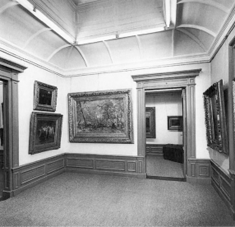
fig. 4 The Museum Mesdag in 1989
- the spacious atrium, the fascinating intersecting spaces, the fine quality of the natural daylight - now clearly outshine the deficiencies.
Although in fact the Museum copes remarkably well with the heavy demands made on it, the steadily rising tide of visitors has left no alternative to the construction of a new wing in order to guarantee every interested individual an equally rewarding, relaxed visit. From the mid-1980s the rapid succession of temporary exhibitions has exacerbated the need for space designed specifically for this purpose.
In late 1989 the Amsterdam City Council granted the Van Gogh Museum permission to expand on the side facing the Museumplein. In the autumn of 1991, the financial requirements for the extension were met when the Yasuda Fire and Marine Insurance Company Ltd. donated 37.5 million Dutch guilders. The eminent Japanese architect Kisho Kurokawa was invited to design the new exhibition wing. Since then progress has been slow, due mainly to the inevitable red tape involved in city planning procedures. But from the standpoint of 1995, an opening date in 1998 still seems feasible.
| |
The Van Gogh Museum as research centre
Apart from its most obvious function - displaying its collections - the Van Gogh Museum also serves as a centre for Van Gogh research. In addition to the numer- | |
| |
ous sketchbooks, drawings and paintings of Vincent van Gogh, the Museum houses virtually all of the letters from the artist to his brother Theo. It also preserves his scrapbooks, several of the albums he filled with poetry for his siblings, and the hundreds of magazine illustrations he accumulated throughout his life as sources of inspiration. The Vincent van Gogh Foundation has lent the Museum a great deal of correspondence and archival material relating to Theo van Gogh and other members of his family. Last but not least, there is an extensive library that is particularly strong in the field of late 19th-century art (see the article by Anita Vriend in this volume of the Journal). These various holdings make the Van Gogh Museum the preeminent place to study the artist and the reception of his oeuvre.
Beginning already in 1970 - three years before the actual opening of the Museum - the results of research conducted by the staff were routinely published in the Bulletin Vincent, under the supervision of Dr Jan Hulsker. By the time the Bulletin was discontinued in 1976, a total of sixteen issues had been produced.
In 1988, with the support of the Vincent van Gogh Foundation, the Museum launched a new series of scholarly publications entitled Cahiers Vincent, which feature previously unpublished sources connected with the artist. Six volumes have been published thus far and have included everything from the poetry albums assembled by Vincent in the 1870s for his relatives and various friends to the letters of condolence Theo received following his brother's death, as well as research into the early provenances of Van Gogh's works. A study of Vincent's painting techniques and materials was also part of this series. In 1987 the Museum's documentalist Fieke Pabst published Theo van Gogh's address book in the catalogue which accompanied the exhibition Van Gogh à Paris at the Musée d'Orsay.
The correspondence around Van Gogh forms a major area of interest and research. Jo van Gogh and her son originally published what was to remain the standard edition of Vincent's letters until 1973. That year, Dr van Gogh ushered the last reprinting through the press, in time for the opening of the Museum. He himself was interested in editing the group of 45 letters from Gauguin to Vincent, Theo and Jo van Gogh, but could not finish the task before he died in 1978. It was then Douglas Cooper who published this collection in 1983, in cooperation with the Museum. In 1990, the Museum staff published a completely revised and considerably enlarged Dutch-language edition of all known letters to and from Vincent van Gogh, based on new transcriptions. Since 1994, in joint venture with the Huygens Institute for text-critical editions, the Museum has embarked on the preparation of a fully annotated edition of the entire correspondence.
| |
The development of the collection
When, in 1973, the Van Gogh Museum opened its doors to the public, the core of the collection of paintings was formed by some 200 canvases by Vincent van Gogh, together with another group of pictures by contemporaries of the artist, the majority of which had originally belonged to Vincent and his brother Theo. The brothers' role in creating this supporting collection and the fact that hardly anything of it has ever been dispersed is what makes the Van Gogh Museum unique. In acquiring further works of art, Vincent and Theo's correspondence - which tells us in great detail about their taste - is an essential guideline. During the 1970s and early 1980s it was this that more or less entirely informed the Museum's

fig. 5 Bulletin of the Rijksmuseum Vincent van Gogh, vol. 4 (1976)
| |
| |
purchases. During the last decade, however, the institution's position within the Dutch art world has begun to change and this has extended the scope and character of its acquisition policy.
For some years after the Van Gogh Museum opened, acquiring paintings by its namesake was still an option. Despite skyrocketing prices, the Museum did manage to purchase Van Gogh's Avenue with poplars in autumn, a major work from the Nuenen period, in 1977, and in 1979 it bought the marvellous drawing of the Zouave. In 1990 we were delighted to receive two small pictures from the estate of Mrs Elisabeth Ribbius Peletier, a bequest arranged by Dr Van Gogh before he died. Still more recently, Mrs Margot Refisch bequeathed an oil painting depicting a Nuenen peasant woman digging - a welcome addition to the group of works from Brabant which had so far lacked such a motif.
In the span of only a few short years Theo and Vincent van Gogh built up what amounted to a typical artist's collection, consisting of works they had received from close colleagues in exchange for Vincent's own. Only a small part of the works assembled - the group of works by Monticelli, most of the Gauguins, the Manet prints and the superb Seurat drawing - were actually purchased. We know the brothers lamented their failure to convince a number of the most prominent Impressionists to make a trade, and that Vincent had his heart set on an oil sketch by Seurat. As it happened, they lacked the financial resources - and ultimately also the time - that would have enabled their collection to fully mature: their deaths in July 1890 and January 1891 put an abrupt end to their efforts.
To be sure, the collection was subsequently cared for by the widow and son of Theo van Gogh, but as an ensemble it disappeared from public sight. Only some of its most outstanding works - such as Lautrec's Poudre de riz and the paintings by Gauguin - made occasional appearances in exhibitions or were illustrated in books. Not until the Van Gogh Museum opened in 1973 was it possible to study and enjoy the collection as a coherent whole, to discover its strengths as well as its weaknesses. Although it became known as Theo van Gogh's collection, it was - as Jan Hulsker recently pointed out again - most definitely a joint effort.
Thanks to the foresight of Dr Vincent Willem van Gogh, the collection was never approached as an absolute, historical entity frozen in time. In contrast to many other
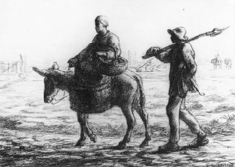
fig. 6 Jean-François Millet, In the morning (Le matin), acquired in 1983 (T 782 M/1993)
private collections that have subsequently become museums, Dr Van Gogh always took the position that it should be allowed to grow. Indeed, between 1962 and his death in 1978, he himself played an important role in purchasing works, not only by Vincent, but also by his contemporaries, and he actively solicited gifts and donations.
Through the Galerie Valentien in Stuttgart the Vincent van Gogh Foundation acquired a collection of paintings and drawings by minor French artists working in Auvers around the turn of the century. The ensemble, which had belonged to Paul Gachet, Jr, the son of Van Gogh's friend and doctor, has, however, more documentary than artistic value. Similarly, in 1966, the Foundation accepted the bequest of H.A.D. Thomas, a collector in Amsterdam. It contained a Head of a peasant woman ascribed to Van Gogh that was included in the 1970 edition of De la Faille's oeuvre catalogue; since then its authenticity has been challenged, as has that of a canvas signed ‘Monet’. Of considerably more importantance were the five Monticelli paintings which formed part of Thomas's collection and the donation of F.W.M. baroness van der Borch van Verwolde, the second wife of Jo van Gogh's brother Andries Bonger, who, on the occasion of the opening of the Museum presented Emile Bernard's Pont-Aven seen from the Bois d'Amour, as well as
| |
| |
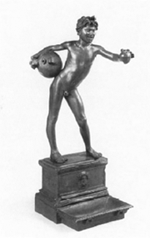
fig. 7 Vincenzo Gemito, The water-seller, acquired in 1991 (V 54 M/1991)
the correspondence between her late husband, Theo van Gogh and Père Tanguy. Thus, it was Dr Van Gogh himself who set the stage for the presentation of Vincent's oeuvre in a lively dialogue with his artistic confrères.
French painting dominated the 19th-century art world, and in Van Gogh's personal pantheon artists of the generation of Delacroix, Millet, and the Barbizon School were given a place of honour. In fact, Theo and Vincent's collection contained no works by these painters, with the exception of the group of paintings by Adolphe Monticelli. Only in 1994, with the purchase of a landscape by Théodore Rousseau, did the Van Gogh Museum begin to create a basis for a more complete presentation of this important group of landscape painters.
Although the Museum's collection must still do without a major picture by Millet, it has been able to acquire important pieces by his contemporaries in the peasant genre such as Jules Breton, Jozef Israëls, and Léon Lhermitte. A representative figure painting by Millet's urban counterpart, Jean-François Raffaëlli, has been bought as well. In the realm of Realist still life, fine pieces by Philippe Rousseau and François Bonvin were acquired - a group to which Thomas Couture's programmatic satire A realist (1865) forms an ironic introduction.
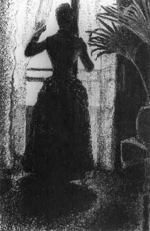
fig. 8 Paul Signac, Le dimanche parisien, acquired in 1992 (P 768 V/1992, Vincent van Gogh Foundation)
The scant representation of Impressionism vero e proprio remains a conspicuous gap in the Museum's collection. To be sure, the acquisition of works by two of the movement's forerunners, Paul Guigou and Johan Barthold Jongkind, have brought some consolation, but the work of the great masters of the period are simply beyond the financial reach of the Museum.
Besides the works by Van Gogh himself, the group by Post-Impressionists such as Gauguin, Bernard and Toulouse-Lautrec - whom Van Gogh dubbed ‘les impressionnistes du petit boulevard’ - forms the essential core of the collection. Emile Bernard is broadly represented thanks to the Elin Ekström gift of 1990; further, an early (and rare) pointillist work by Vincent's ‘copaing’ that once belonged to Andries Bonger could be acquired. By contrast, the Museum did not own a single painting by Vincent's friends Louis Anquetin and Paul Signac until 1986. The acquisition of two landscapes and a portrait by Emile Schuffenecker also fits well with this ensemble of epoch-making artists around Van Gogh and Gauguin.
In recent years, the Van Gogh Museum has also laid the foundation for a collection of Symbolist paintings. This was prompted by the acquisitions in 1986 and 1987 of two splendid pastels by Odilon Redon which had once been part
| |
| |
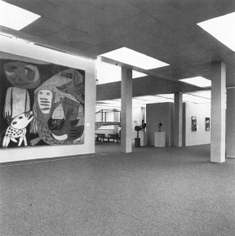
fig. 9 De Nederlandse identiteit in de kunst na 1945, 1984-85
of the Bonger collection. Since then, a landscape in oil by this artist has been added as well. Within only a short period, the Museum has been able to gather a number of highly representative works in both oil and pastel by such leading figures of the Symbolist movement as Eugène Carrière and Maurice Denis, as well as by lesser known artists such as Edmond Aman-Jean, Louis Welden Hawkins, Armand Point, and Carlos Schwabe. The Museum was particularly fortunate to have been able to bring together a trio of pictures by Pierre Puvis de Chavannes. The French artist meant a great deal to the generation of the Post-Impressionists and not least to Van Gogh, particularly in the last months of his life (see the article by Aimee Brown-Price in this volume of the Journal).
Because of the Rijksmuseum's proximity and specialisation, the representation of Dutch painting in the Van Gogh Museum has been limited to only its most outstanding masters and several of Vincent's closest contemporaries. The Museum purchased Matthijs Maris's poetic masterpiece Girl with goats - a work of 1875 - in part because Vincent was in close contact with the artist at that time; Jozef Israëls's Peasant family at table of 1882 was
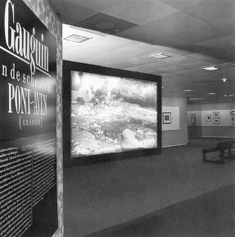
fig. 10 Gauguin and the school of Pont-Aven, 1986
acquired because its theme anticipated that of The potato eaters. Among the purchases of works by Dutch artists of Van Gogh's own generation, Jan Toorop's youthful Self-portrait and the animated Poppies by Floris Verster certainly belong to the most striking.
The Van Gogh Museum has recently begun to draw the consequences from the reevaluation on non-French 19th-century art, if only modestly thus far. Belgian art, for instance, until recently only represented by a painting of the Borinage by Van Gogh's friend Eugène Boch, is now complemented by a pastel by Fernand Khnopff and bronzes by Georges Minne and Constantin Meunier. Italy is manifested in works by Vittorio Corcos and the sculptor Vincenzo Gemito, while the Austrian painter Felician Freiherr von Myrbach-Rheinfeld (see the article by Edwin Becker in this volume of the Journal) and Munich-based Franz von Stuck stand for the German-speaking countries.
Most of the Museum's purchases are made with income generated by the Museum Shop, and by - or with the support of - the Vincent van Gogh Foundation. Government funds and the Vereniging Rembrandt have also helped out
| |
| |
from time to time. In addition, the Museum has received gifts and bequests from private individuals, the business community, and the Friends of the Van Gogh Museum.
In cases where the Museum has lacked the necessary funds to acquire the works of ‘expensive’ artists, permanent and long- term loans have offered a solution. Since 1991, for example, the Barbizon School and other artists of the mid-19th century have been represented in the collection via the loan of several dozen paintings from the Rijksmuseum, the Amsterdams Historisch Museum, the Museum Kröller-Müller, and the Netherlands Office for Fine Art. Thanks to these collegial gestures, the Museum is now in a position to display works by such artists as Corot, Courbet, Daubigny, Decamps, Delacroix, Diaz, Fantin-Latour, Millet and Scheffer, thus illustrating the wellsprings of Vincent's art. Moreover, having never or rarely been exhibited by their former caretakers, these fine works are now accessible to the public.
The under-representation of true Impressionist masters remains a thorn in the Museum's side, but the great artists of the movement are simply beyond financial reach. When, therefore, in 1991 the Netherlands Office for Fine Art lent Claude Monet's Tulip field of 1886, a painting once marketed by Theo van Gogh, our joy was that much more intense - particularly since this was probably the first work of Monet's Vincent saw when he arrived in Paris.
But not only our Dutch colleagues have come to our assistance with loans: representative works by Camille and Lucien Pissarro, Odilon Redon, Charles Angrand, and Pablo Picasso have, over the last few years, been deposited in the Museum by private lenders from both Holland and abroad. Their presence has helped the Museum to give a more complete picture of 19th-century European art.
| |
Exhibitions
When the Van Gogh Museum was established, Dr van Gogh stipulated that it operate according to the most advanced standards, but he was equally concerned that it be a lively institution. Visitors, he thought, should not only be confronted with the work of Van Gogh but also with that of other 19th-century artists, in either the permanent collection or in temporary exhibitions.
After the opening of the museum, the first director, Emile Meijer, was quick to introduce the fledgling institution to Amsterdam. Rather than limiting himself to Van Gogh and 19th-century art, he launched a wide range of activities, including concerts and theatrical productions. Within the framework of a visual arts workshop, courses were offered to the public on drawing, painting and photography. During Johannes van der Wolk's tenure as director, the Museum charted a more strictly art historical course; his exhibitions shed valuable light on the artistic context in which Van Gogh worked. Since 1986, the Museum's focus has expanded to include the entire second half of the 19th century, approached, moreover, not from a Dutch or French, but from an international perspective. Van Gogh, however, has remained the central focus of the Museum's program.
In 1986 a separate department was created within the Museum to handle temporary exhibitions, with Fred Leeman as its first head, Louis van Tilborgh as exhibitions curator and Aly Noordermeer as exhibitions coordinator. In 1990, during the Van Gogh centennial, both Leeman and Van Tilborgh were reassigned to the permanent collection and Stefan van Raaij became the new head of exhibitions. In 1993 he was succeeded by Andreas Blühm.
Responsibility for the organisation and scholarly research involved in the temporary exhibitions resides with both the department and guest curators. In the past these latter have come from the art history institutes of the University of Amsterdam and the Vrije Universiteit in Amsterdam, as well as other European countries and
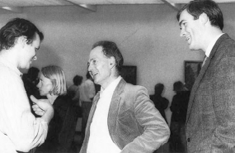
fig. 11 Erik Andriesse, Frank Auerbach and Ronald de Leeuw at the opening of the Auerbach exhibition in 1989
| |
| |
| |
| |
America. A complete listing of the Museum's exhibitions since 1973 is given at the back of this issue of the Journal.
In the beginning, the Museum had no specific policy regarding exhibitions. Emile Meijer organised a number of shows of both 19th-century and contemporary art, with the latter dominating the program. In 1984 the Museum offered its space for an exhibition organised by the departing director of the Stedelijk Museum: De Nederlandse identiteit in de kunst na 1945. Between 1987 and 1989 a number of artists were invited to exhibit whose work involved a kind of dialogue with that of Van Gogh: Arie van Geest, Pat Steir, Erik Andriesse and Frank Auerbach. During the exhibition Neo-impressionisten: Seurat tot Struycken in 1988, a photomontage by Peter Struycken - installed as a frieze over the work of his 19th-century colleagues - was given prominent place. Between 1991 and 1993 several exhibitions were organised which explored the relationship between contemporary art and the artistic legacy of the 19th century. In 1992, for example, Frantisek Lesák exhibited sculptures and drawings inspired by Claude Monet's haystacks.
It is perhaps surprising to discover that in the Museum's early years only a few exhibitions were devoted to the institution's namesake. One of these was English influences on Vincent van Gogh in 1975, an exhibition originally circulated in England; another was Evert van Uitert's De roem van Vincent van Gogh in 1977. During Emile Meijer's tenure, two exhibitions were devoted to Van Gogh's Dutch contemporaries, namely George Hendrik Breitner and Anthon van Rappard. These set the stage for future shows exploring Van Gogh's artistic milieu: Vincent van Gogh in zijn Hollandse jaren (1980) and Van Gogh and his French friends: Cloisonnism as a style, 1886-1891 (1981). These shows, conceived with the help of guest curators Griselda Pollock and Bogumila Welsh, helped establish the Van Gogh Museum as a centre for international Van Gogh research.
Since the end of the 1980s, Louis van Tilborgh, in close cooperation with Sjraar van Heugten, has curated several important Van Gogh exhibitions: Van Gogh and Millet (1989), which focused on Van Gogh as a peasant painter; the major centennial retrospective in 1990 - with 133 masterpieces united under its roof a milestone in the Museum's history; and two smaller thematic shows dedicated to The potato eaters (1993) and Van Gogh's Parisian self-portraits (1994), which was also shown in Hamburg in the spring of 1995. In 1990, Van Heugten was responsible for the very moving exhibition Sketches from the letters of Vincent van Gogh, while Fred Leeman and German guest curator Roland Dorn organised Vincent van Gogh and the modern movement, 1890-1914, which was shown in both Essen's Museum Folkwang and Amsterdam, where it concluded the Van Gogh centennial year.
The Van Gogh Museum has also been instrumental in organising a number of shows abroad, sometimes in close cooperation with the Kröller-Müller Museum. The Japanese in particular have shown a great fondness for Van Gogh exhibitions, the first of which the Museum organised in Tokyo (The National Museum of Western Art) in 1976. Since 1993 the Museum has planned five concise, thematic Van Gogh exhibitions for the Seji Togo Memorial Yasuda Kasai Museum of Art in Tokyo. Of course, the Museum was also a major lender to the important Van Gogh retrospectives in Paris and New York in the 1980s, and in 1988 it organised Mostra van Gogh at the Galleria Nazionale d'Arte Moderna in Rome.
The Van Gogh Museum has, since its inception, taken a particular interest in artists whose work has rarely if ever been shown in the Netherlands, or, for that matter, elsewhere. It devoted retrospectives to painters as diverse as Emile Bernard, Georges de Feure, Adolphe Monticelli, Anthon van Rappard, John Russell, Arnold Schönberg, Walter Sickert, August Strindberg, Felix Vallotton, Jan Verkade, Edouard Vuillard, and Stanislaw Witkiewicz.
Most exhibitions in the Van Gogh Museum naturally revolve around French artists, who not only set the tone in 19th-century Europe but also the standard by which Van Gogh judged art: ‘don't they form the heart of this century as far as painting is concerned?,’ he asked. The exhibitions Monet in Holland in 1986 and Franse meesters uit het Metropolitan Museum of Art in 1987 were particularly successful. Nonetheless, the Museum has also devoted attention to art from other European cultural centres, as in Ottocento/Novecento: Italiaanse kunst, 1870-1910 (1988), Hard Times (1988), which focused on Victorian social-realist art, or Glasgow 1900: art & design (1992). Dutch Naturalist, Impressionist and Symbolist painting of 1880s and early 1890s was given a broad survey in De Schilders van Tachtig in 1991, which - in a reduced version - had first been seen at Glasgow's Burrell Collection in 1990 under the title The age of Van Gogh.
| |
| |
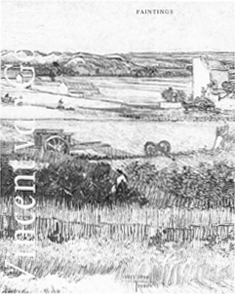
fig. 13 Book designs by (l. to r.) Walter Nikkels, 1990; Marjo Starink, 1991; Robert Schaap, 1993; Pieter Roozen, 1994
Whenever possible, the Museum has sought to highlight its own collection. In order to create an ideal context for the introduction of new acquisitions to the public, the Museum initiated a series of four exhibitions entitled 19th-century masters in 1993, which feature largely forgotten artists like Philippe Rousseau and Louis Welden Hawkins. On a larger scale, the major retrospectives of 1994 and 1995, Pierre Puvis de Chavannes, Odilon Redon and Maurice Denis are cases in point.
Since the mid-1980s, the Museum has also frequently presented various facets of late 19th-century graphic art. It has been privileged to collaborate on such projects with the Bibliothèque Nationale in Paris, the Jane Voorhees Zimmerlee Museum in New Brunswick and the Josefowitz Collection. Monographic exhibitions have addressed the works of Félix Bracquemond, Honoré Daumier, Edvard Munch, Félicien Rops, Henri de Toulouse-Lautrec, and James McNeill Whistler, while broad surveys have examined the graphic art of the School of Pont-Aven and the Nabis. Selections from the Museum's own collection of works on paper are also regularly presented, such as its Manet prints, English wood-engravings or Japanese woodcuts.
During the Museum's early years in particular a large number of exhibitions were devoted to photography. From 1974 to 1979 the annual exhibition of World Press Photo took place in the Museum each spring. During these
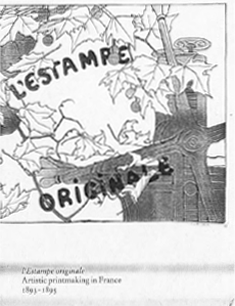
years exhibitions were held on the work of Emmy Andriesse, Diana Arbus, Maria Austria, and others. The Museum began to exhibit photography once again in 1986. Works by Emmy Andriesse, Pat Bognar, Paul Huff, Gerard van Keulen and Toon Michiels - all of which had a relationship to Van Gogh - were presented. Soon, however, the emphasis shifted to the 19th century itself. Photographs of peasants from the Kempen area accompanied The potato eaters show. Works by the Victorian photographer Henry Peach Robinson and such artists as August Strindberg and Edouard Vuillard were also displayed. In the 1980's two important collections of photographs, assembled by Bert Hartkamp and Willem Diepraam, were acquired by the Netherlands Office for Fine Arts in The Hague on behalf of the State in order to form the nucleus of a national photographic collection. In early 1994 it was decided that these collections were to be deposited permanently at the Rijksmuseum, and that they were to be presented to the public in cooperation with the Van Gogh Museum. Beginning in the spring of 1996, the Museum will organize annual exhibitions of the 19th-century photographs from these holdings.
| |
Publications
The Museum staff is continually busy gathering documents and information, with the aim of periodically publishing new catalogues of the collection. In 1987, a volume entitled The Rijksmuseum Vincent van Gogh appeared, edited by Professor Evert van Uitert of Amsterdam
| |
| |
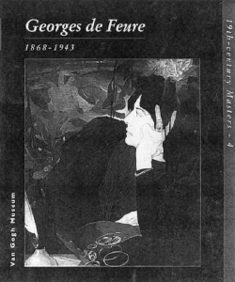
University. It contains a concise, but fully illustrated catalogue of the paintings and drawings, as well as articles on various other aspects of the collection and the Museum's history. A supplementary catalogue of acquisitions from the period 1986-91 followed, which also lists the numerous loans the Museum received from other public collections. In 1994, the author published The Van Gogh Museum: paintings and pastels, a work intended for the general public featuring over 380 colour illustrations chosen from the Museum's holding of paintings, pastels and watercolours. In 1978, Dr Willem van Gulik prepared the first catalogue of the Museum's holdings of Japanese woodcuts. In 1991, a new edition of the catalogue, which was entirely revised and supplemented as well as fully illustrated, was published by Charlotte van Rappard.
In this context it should also be mentioned that over the last few years the Museum has published most of its catalogues and other written material - such as this Journal - in the English language, not out of any disrespect for the Dutch public, but because the majority of visitors to the Museum are foreigners. Moreover, we have sought to make the fruits of the long years of research contained in our publications available to our colleagues and interested amateurs abroad.
From its inception, the Museum has worked with distinguished graphic designers for its catalogues, posters, and signage. One of the first was Harry Sierman, who designed the issues of the Bulletin Vincent. The agency Total Design, particularly Jolijn van de Wouw, was responsible for the Museum's first ‘corporate identity’ and signage.

Total Design was again invited in the late 1980s to create a new logo, as well as the signage for the 1990 Van Gogh centennial exhibition.
The list of designers involved with the Museum's publications - including Anthon Beeke, Gijsbert Dijker, Robert-Jan Hofhuis, Paul Hofman, Walter Nikkels, Thelma van Oordt, Guus Ros, Robert Schaap, Gijs Sierman, Marjo Starink, Swip Stolk and Harry Veltman - reads like a short history of Dutch graphic design in the 1980s and 1990s. Many of these were also responsible for the striking posters with which the Museum has enlivened the Amsterdam cityscape. Pieter Roozen, invited in 1994 to redesign the Museum's ‘look’ for the remainder of this century, has made an impressive start with his designs for the catalogues of Puvis de Chavannes and In Perfect Harmony: picture and frame, 1850-1920.
With the exception of the activities of the Werkplaats Beeldende Vorming (Visual Arts Workshop), which continued until 1990 (see the article by Gerard Bronkhorst in this volume of the Journal), the Van Gogh Museum has never been particularly didactic. Wall texts in the permanent collection have been kept to a minimum - in the perhaps optimistic belief that pictures, when well arranged, could tell their own story. In general, the temporary exhibitions had somewhat more supportive material, but here, too, discretion was the motto. The visitor who wished for more information, however, has always been well served. Aside from the bilingual (Dutch and English) wall texts and labels, nearly every exhibition has been accompanied by a complete catalogue and an issue of the Van Gogh Bulletin, which contains all pertinent information in
| |
| |
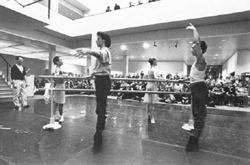
fig. 14 Ballet demonstration by the Nationale Ballet during the exhibition Degas, sculptor in 1991
short form. Some exhibitions were also equipped with an audio tour in various languages.
Regularly, series of lectures or symposia - to which both Dutch and foreign speakers have been invited - were organised to accompany temporary exhibitions. In the last several years such well-known scholars of 19th-century art as Albert Boime, Françoise Cachin, Voitech Jasiutinsky, Linda Nochlin, the late John Rewald, Pierre Vaisse, Peter Vergo and Gabriel Weisberg have addressed an international audience. Among these were also such renowned Van Gogh specialists as Roland Dorn, Walter Feilchenfeldt, Jan Hulsker, Ronald Pickvance and Evert van Uitert. Particularly successful were the International Van Gogh Symposium in 1990 and the symposium devoted to Charles Rennie Mackintosh in connection with the exhibition Glasgow 1900: art and design.
In 1994 and 1995 the Van Gogh Museum has offered seminars within the Amsterdam Summer University program. In 1994 the course was entitled ‘Symbolism: towards a definition,’ and in 1995 ‘Collecting 19th-century art.’ These meetings for national and foreign post-graduates were organised by Ineke Middag, who since 1991 has also been in charge of special events. Among these, and relative to the various themes of the exhibitions, were a public ballet lesson given by members of the National Ballet in conjunction with Degas sculptor and a Music Hall performance during Walter Sickert. During two seasons violinist Edwin Blankenstein was responsible for the adventurous programming of a series of Sunday morning concerts.
| |
Future directions
The purpose of the change in status of the state museums, which began in July of 1994, was to give these institutions more independence and to free them from certain formal restrictions which had, in some sense, hindered their growth and operation. The tasks of both the government and the museums have been newly distributed, allowing the museums, in accordance with the overall policy of the Ministry of Culture, to seek their own way within the scholarly and public world.
On matters of budget and general policy the director of the Van Gogh Museum is responsible to a five-member supervisory board (Raad van Toezicht), appointed by the Minister of Education, Culture and Sciences. The collection, partly the property of the Vincent van Gogh Foundation, partly of the State of the Netherlands, has been given on 30-year loan. The Museum's new status does not imply that the government has withdrawn its considerable financial support. Every four years the Ministry will grant the Museum a subsidy for a substantial part of its running costs.
It was hoped that one of the effects of this move would be to make Dutch museums still more aware of their responsibility to the general public, and that they would carry out their cultural mission in lively dialogue with their visitors. This does not necessarily mean that the public will determine future policy or that commercial interests will get the upper hand. The newly independent museum should offer the visitor seriously interested in the fine arts an intellectually satisfying and inspirational experience without, however, alienating the one who sees a visit as simply a pleasant way to spend his free time.
The Van Gogh Museum, already for a number of years second only to the Rijksmuseum in terms of numbers of visitors, has always had excellent relations with the public. If at first it was feared tourism would dominate, the lively exhibition program of the last decade has made the Museum a highly respected and - in the field of 19th-century art - innovative institution. Thanks to its consistent policy, the Museum has developed a following at home and abroad. The Museum has not made it easy on itself: in both exhibitions and acquisitions it has often chosen to travel the road less taken in 19th century art history. Considerable energy has also been devoted to the scholarly quality of its publications. Located between the Rijksmuseum and the Stedelijk on the Museumplein - the artistic heart of The Netherlands - and with the wonderful collection of Van Goghs as its
| |
| |

fig. 15 Kisho Kurokawa's design for the new wing; computer animation by Espace et stratégie, Paris
(economic and thematic) focal point, the Museum has now thoroughly established itself.
A number of larger projects are scheduled for the coming years. As mentioned above, the Museum has recently begun to work on the scholarly edition of Van Gogh's letters, and Han van Crimpen, the Museum's first curator, is about to publish the correspondence between Jo and Theo van Gogh, one of the great ‘hidden treasures’ in the Van Gogh Foundation's archives. An in-depth scholarly catalogue of Van Gogh's works in the Museum, to form part of a group of catalogues of the collection as a whole, is planned for the second half of the 1990s. In the summers to follow, exhibitions will accompany the serial publication of the catalogues of drawings, each one reflecting the subject of the new book, a demonstration of how scholarship and public presentation can go hand in hand. A completely new catalogue of the collection of paintings and drawings will also accompany the reopening of the Mesdag Museum in The Hague.
Since 1994, the Van Gogh Museum, as one of the first museums in the Netherlands, has participated in the Research School for Art History, a cooperative organisation of the advanced art history programs of four Dutch universities, the Rijksmuseum and the Rijksbureau voor Kunsthistorische Documentatie (RKD).
The Museum's exhibition program is set to continue its efforts of previous years, and the future looks very promising. Besides retrospective exhibitions of such diverse artists as Lawrence Alma-Tadema and Paul Signac, thematic exhibitions are also planned, one of the most intriguing of which will focus on polychrome sculpture in the 19th century (1996). When the new wing is completed there will also be more room in the Rietveld building for the permanent collection.
The new independent status of the Museum, the renovation of the Museum Mesdag, and the projected extension of the Van Gogh Museum by architect Kisho Kurokawa are guarantees that the next few years will be turbulent ones for our institution. Between now and the 21st century there will be little time for a languorous fin de siècle. The Van Gogh Museum now stands at the beginning of a new era, where the breadth, quality, and influence of its activities will - one hopes - equal that of its unique collection.
|
|